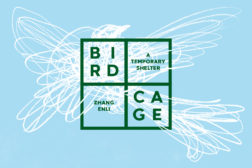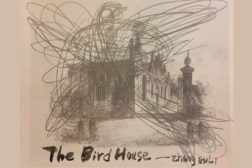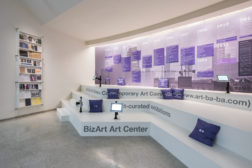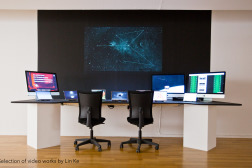
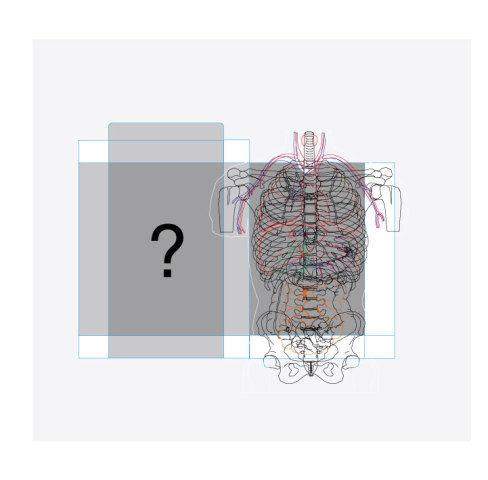
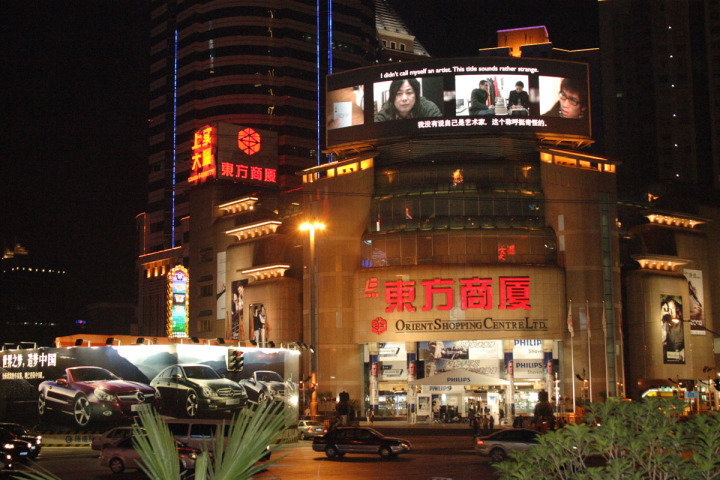

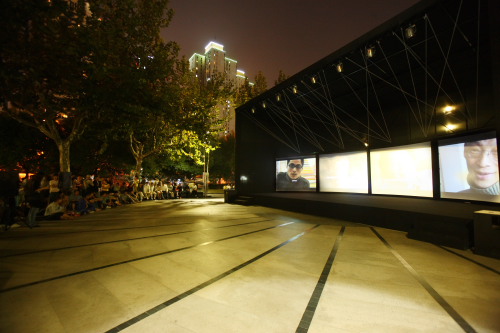
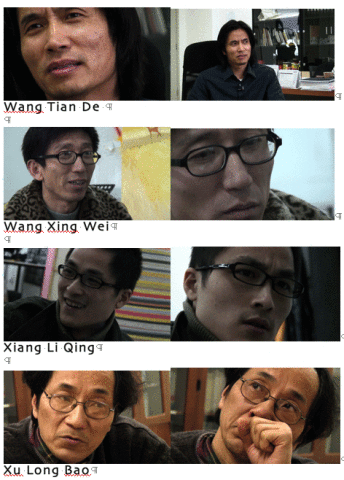

40+4, Art is Not Enough! Not Enough!
The Making of the Arts in Shanghai (‘80’s-2008)
A Documentary by Arthub’s Director Davide Quadrio
40+4, Art is Not Enough! Not Enough!
What is the current situation of Shanghai artistic development? What are the positions of artists within that development? How do artists perceive themselves in this fast changing context and art economy? We put together a series of questions, personal, public, irreverent and naïve, to understand what is going on in the mind of the artists, who are the pillars of the contemporary art scene in Shanghai, especially in the wake of an alienating globalization and commercialization.
After 10 years involved in Shanghai art, Davide Quadrio embarked on an interview project, with artists from all areas of art-making, not only the avant-garde, but also the traditional, official or academic scene. He hoped to present a cross section of art in Shanghai. A number of the selected artists are museum directors, while others are teachers. This project adopted a sort of sociological approach; we undertook research to discover whether this uneasiness was deep-rooted in or shared by Shanghai artists.
And so, together with Lothar Spree, Zhu Xiaowen, and Xu Jie–the last of whom undertook the role of professional interviewer–40+4, Art is Not Enough! Not Enough! probed the relationship between the artists, their work, and the evolution of contemporary art in Shanghai over the last two decades. Forty artists and the four people mentioned above got involved in the research project, for a total of forty-four, the number which, in Chinese, sounds like the translation of “double death,” which is reminiscent of a common tongue twister in the language. Indeed, all the connotations of the number forty-four seemed to us to be ironically appropriate for defining the heart and soul of our project.
The 40 artists interviewed were asked the same questions, each of which was printed on a flashcard; there were twenty-seven cards in all, divided into four colors, along with a set bearing famous quotations about art made by historical figures. The interview got underway with four general and autobiographical questions about the artist (grey cards), and moved on to questions that were philosophical or psychological (blue cards), followed by questions that were of a political or sociological nature (green cards), and winding up with questions about art as a product (red cards). The conversation ended with the artist choosing one last card from the pack containing dozens of quotations (light green cards) by various personalities, concerning the meaning of art. The artist was asked to comment on the card he or she had drawn out loud, and propose a personalized version of the quote if he or she so desired. The interview/conversation lasted on average 30 to 45 minutes, and occasionally an hour.
A painstaking editing process resulted in a composition in which the images flickered across the screen at a hypnotic pace, this perfectly reflects the view of the contemporary art and culture scene in Shanghai: its fragmentation and continuous evolution. By way of this “forced” conversation, the artists’ narratives attempt an analysis of the history of contemporary art from the 1980’s to the present, as they reflect on the condition of the urban artist, the ties existing between contemporary Chinese art and its past, as well as in relation to the world history of art. Artists are also asked to review the art market and the state of artistic criticism in China. The presentation was designed to unfold on four screens, in doing so the film’s narrative not only presents the individual artists, but also the collective point of view of the forty subjects interviewed: a vision of artistic Shanghai that isn’t me, myself, and I.
The presentation of this project for eArt represents an open dialogue of the artistic community to the city, a vis-a-vis discourse that will bring reflections, happiness and frustration; this critical analyses of the cultural development of the city will address the last 15 years in Shanghai. For this occasion, 40+4 Art is Not Enough! Not Enough! is shown in two different formats: the 4 screens will be displayed in the Xujiahui Park, while a new edited version created ad hoc for the festival is presented on the LED screens on the commercial buildings that surround Xujiahui Square.
Artists Interviewed: Shen Fan, Zhang Enli, Shi Yong, Yu Youhan, Zhou Tiehai, Huang Yuanqing, Xu Zhen, Huang Kui, Yang Fudong, Lu Chunsheng, Liang Yue, Liu Jianhua, Li Shan, Zhang Ding, Tang Maohong, Wang Xingwei, Song Tao, Lao Jin Feng, Hu Jieming, Xiang Liqing, Yang Zhenzhong, Ding Yi, Luo Yongjin, Qiu Anxiong, Xu Longbao, Wang Tiande, Zhu Julan, Song Haidong, Gu Wenda, Li Xiangyang, Gong Yan, Li Lei, Liu Dahong, Wang Nanming, Yu Xiaofu, Zhang Peicheng, Xia Haicun, Qiu Dexiu, Yang Hui
A view of 40+4 can be seen opening night in the Final Cut project, eArt festival, October 18th 2008, Shanghai.
40 Questions asked of Participants:
Personal
1. Is an artist powerful? Do you like to be so?
2. Is an artist corruptible? Are you corruptible?
3. Have you ever been doubtful of you yourself being an artist?
4. How do you deal with critics and criticism of your work?
5. Do you think that people should understand your art?
6. Do you find it necessary that a creative/artistic person have a belief?
7. Have you anything to say about art and fear?
8. What do you believe in?
9. During your career, when did you feel special, different, frustrated? And why?
Public
1. Does the artist have to take responsibility for the society he lives in?
2. Is “decency” of concern for an artist?
3. How do you see the relationship between art and ethics?
4. How would you react if a government agency/institution commissioned you to produce a specific work of art for them?
5. What is the relationship between art and power?
6. What is the relationship between art and culture?
7. What and how–do you think–the relationship between Art and Politics should be?
8. Does art open conflicts? Should it do so?
9. What is the relationship between Art History and Ideological History? Is Art History equivalent to Ideological History?
10. Do you still read now? Is reading important for an artist?
11. How did people around you react to you calling yourself an artist?
12. What is the most important contribution of art to social life/society?
13. Do you feel you are a responsible factor within a social and cultural context? How?
Market
1. How do you arrive at a price for your art?
2. Do you like to share your money with your gallerist?
3. Is a curator a facilitator or an artist-user?
4. Is your art a product?
5. After you sold your art, do you miss it? Do you know where it is? Always?
6. Do you like to use your money to support young artists? Just to sponsor them?
7. Is art a mass product? Should it be?
8. Luxury and art, art and luxury? What do you think about this relationship?
9. What do you believe the relationship between gallerists and artists should be?
Two sets of cards were produced and presented during the making of this project, one in English and one in Chinese.
